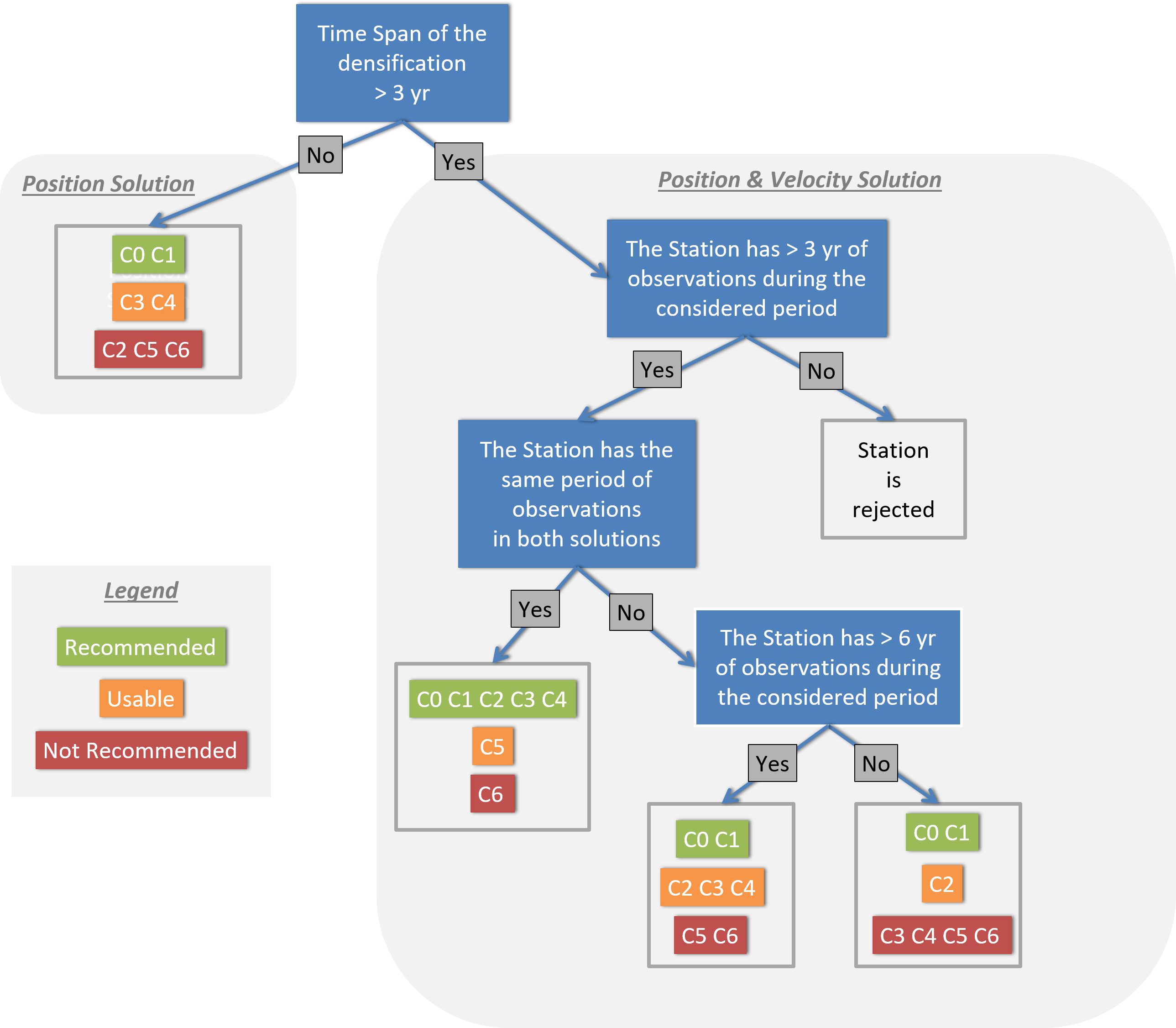Reference Station Selection (Help)
When using a network approach, expressing reliably GNSS position and velocities in a given reference frame (ITRF2014, IGS14, ETRF2000 or ETRF2014) requires the identification of ‘stable’ and ‘reliable’ reference stations. The choice of these reference stations can have a non-negligible impact on the estimated positions and velocities and of course on the derived geodynamic interpretations.
The EPN network has been set up to offer such reference stations: the reference positions and velocities of the EPN stations are kept up to date and are available through the EPN multi-year position and velocity solution. However, not all EPN stations are by definition suitable of reference stations.
To help the identification of the best EPN reference stations, a new station classification was developed (More about the station classification). In addition of the classification, we also developed a web tool to help the user to select the the most optimal EPN reference stations in a considered area and for a given observation time.
This page explains what is behind the pre-selected EPN stations proposed by the tool.
The tool
Figure 1: Algorithm that allows to define if a station is recommended, usable or not recommended as reference station.

The user enters the begin and end date of his densification solution. Based on this time span, the actual observation time of a station in the EPN solution and the class of that station, different rules are applied (Figure 1) in order to define if this EPN station is recommended, usable, not recommended or excluded as reference station.
The ideas behind those rules are:


